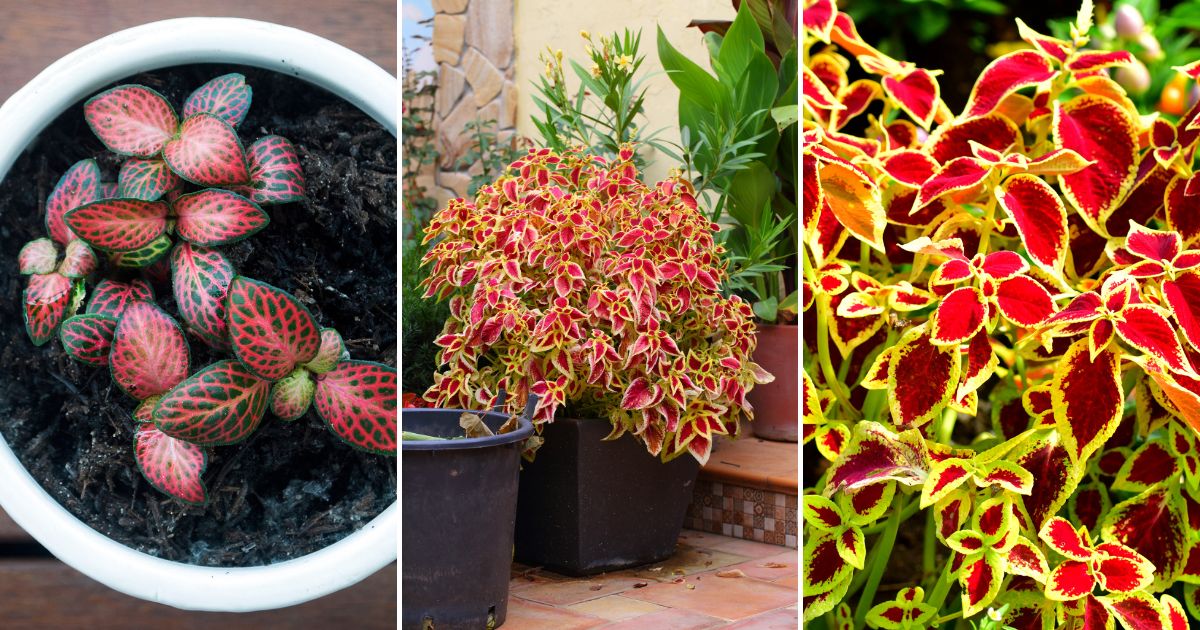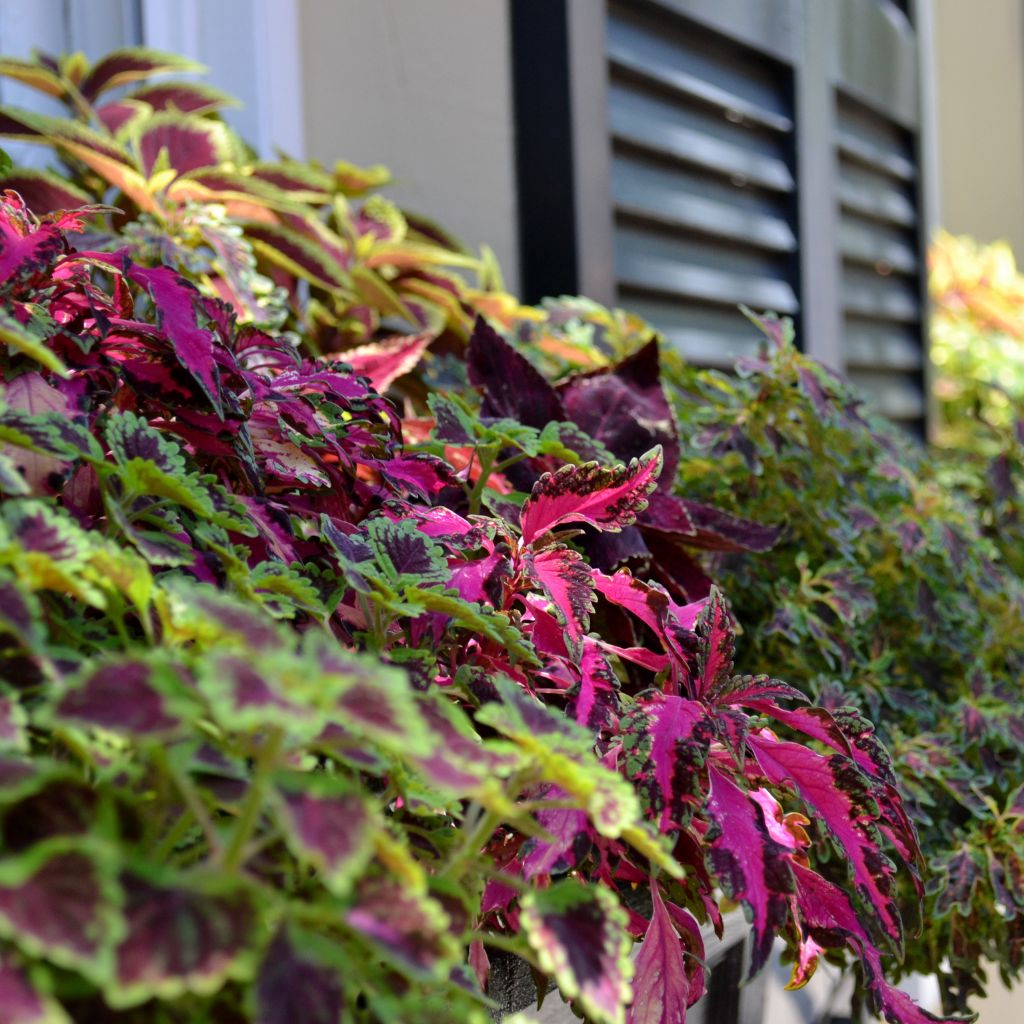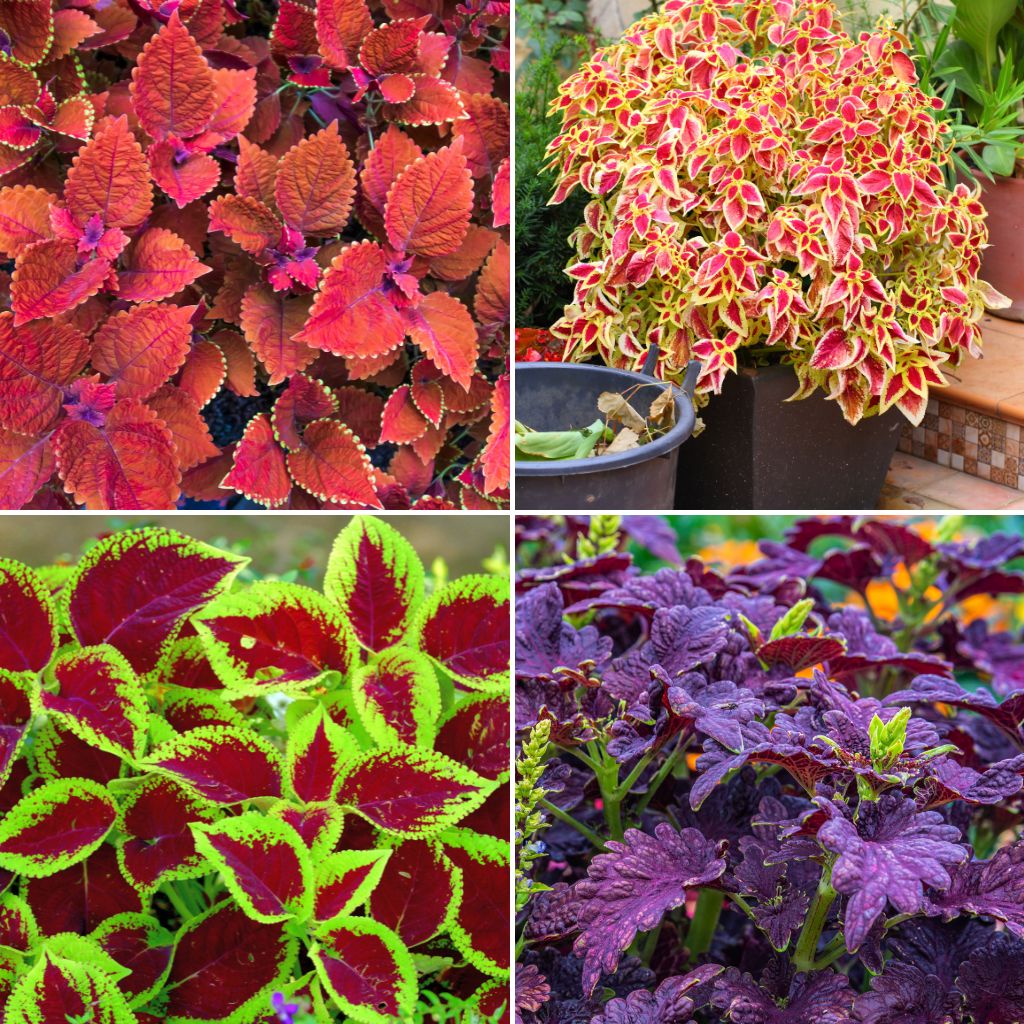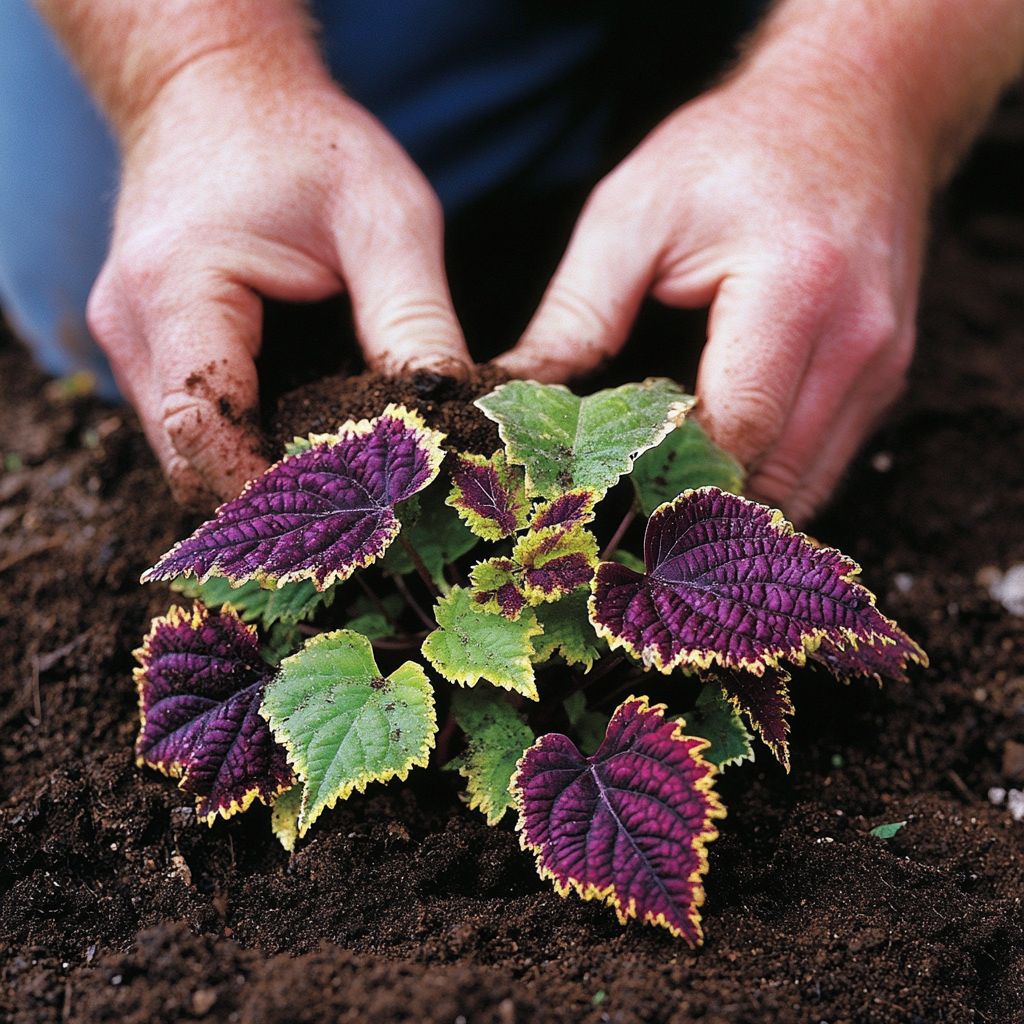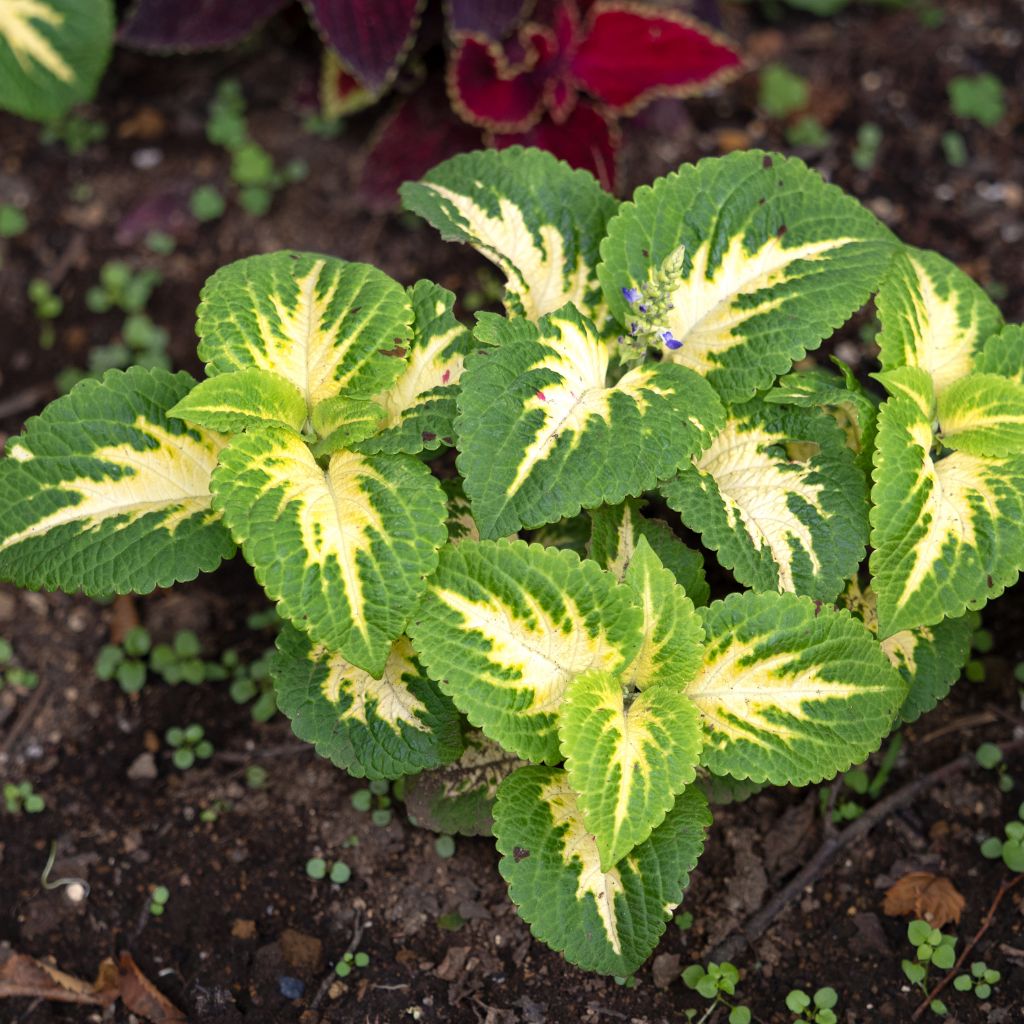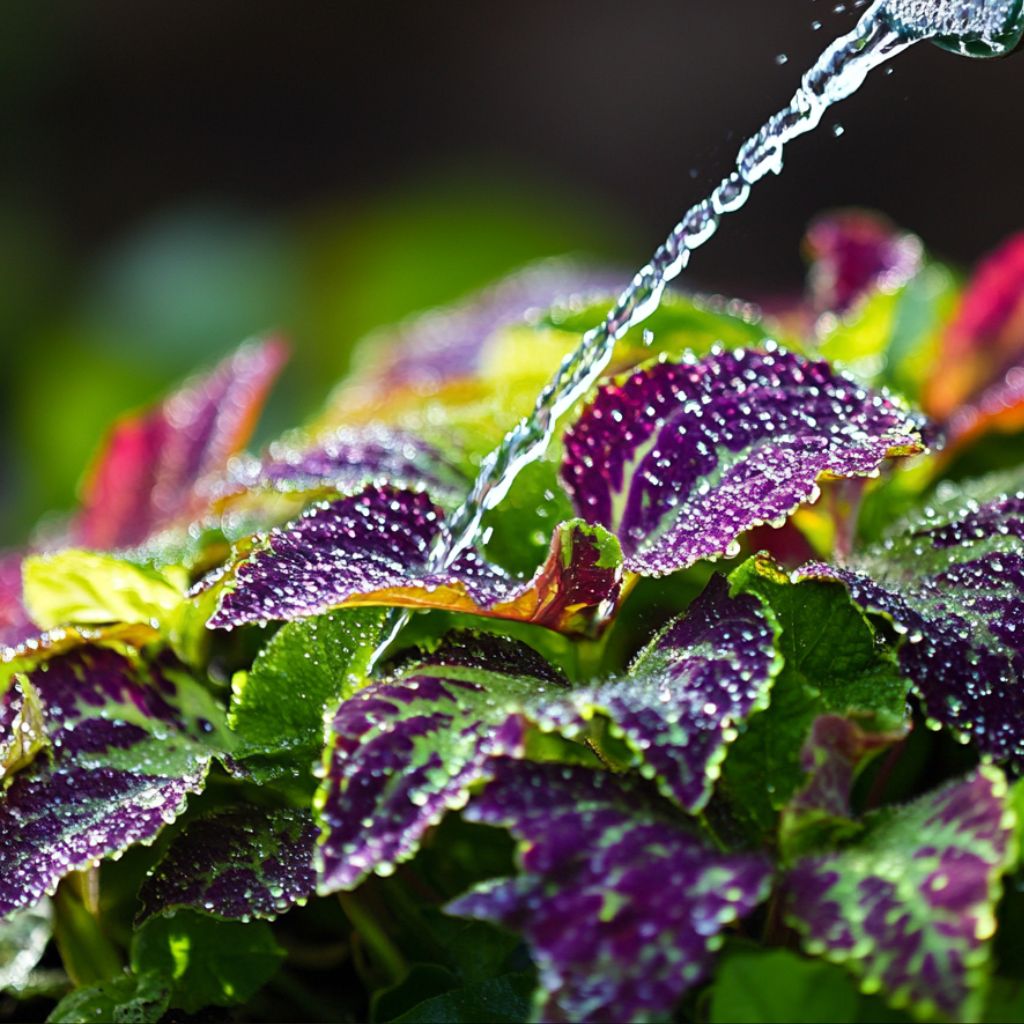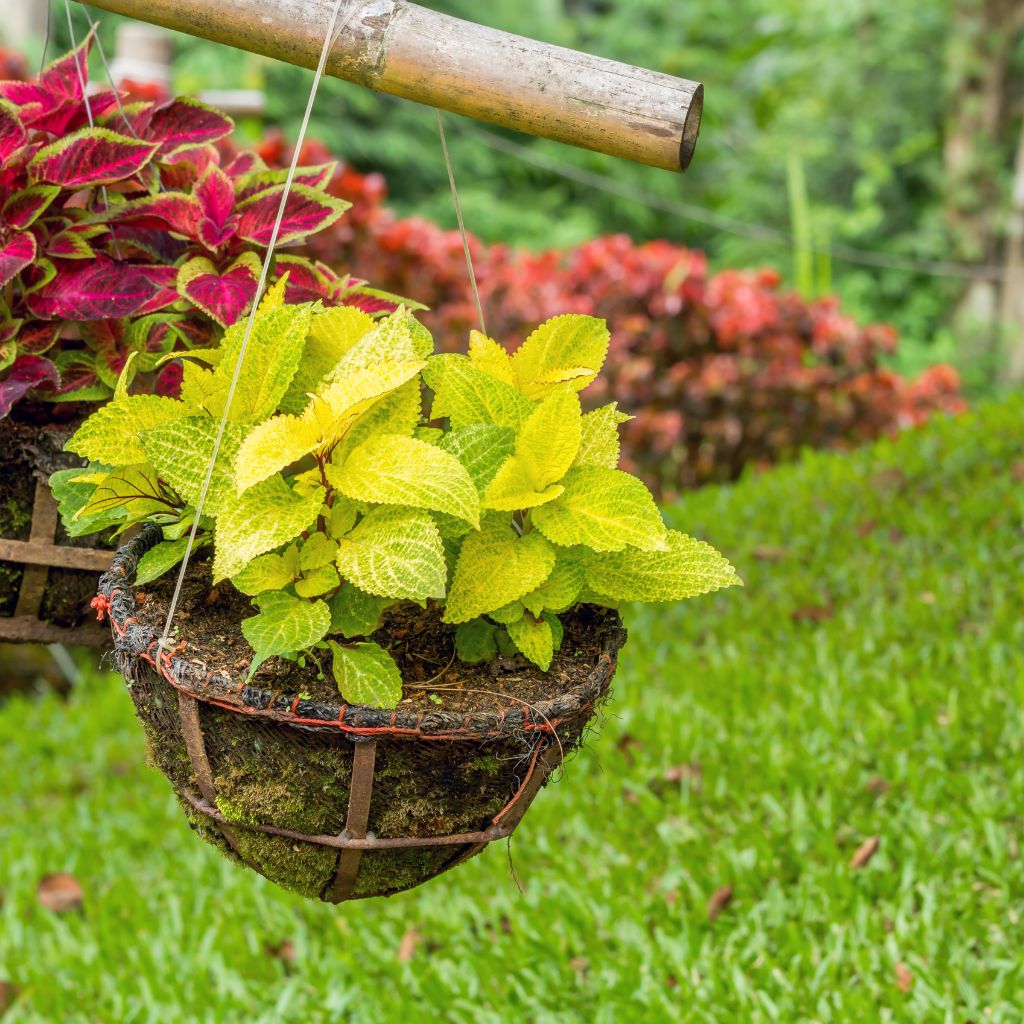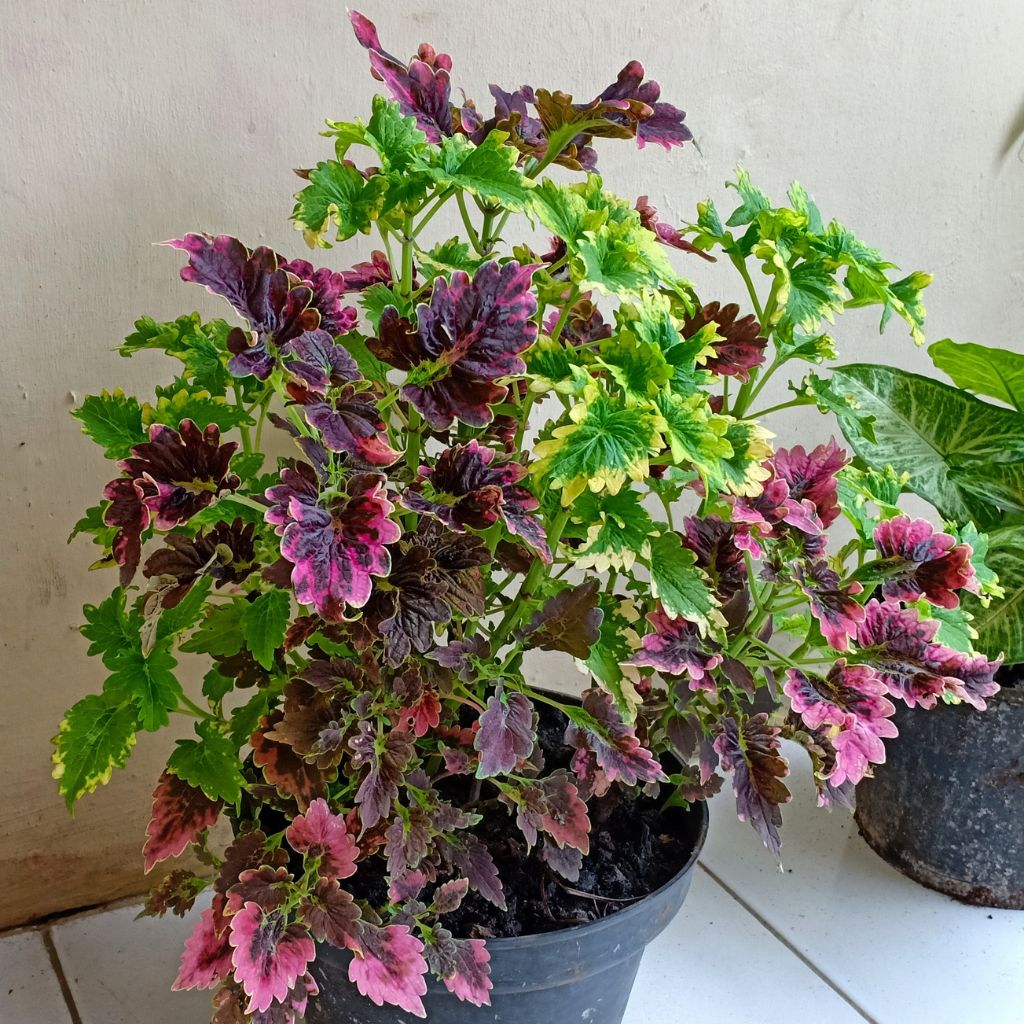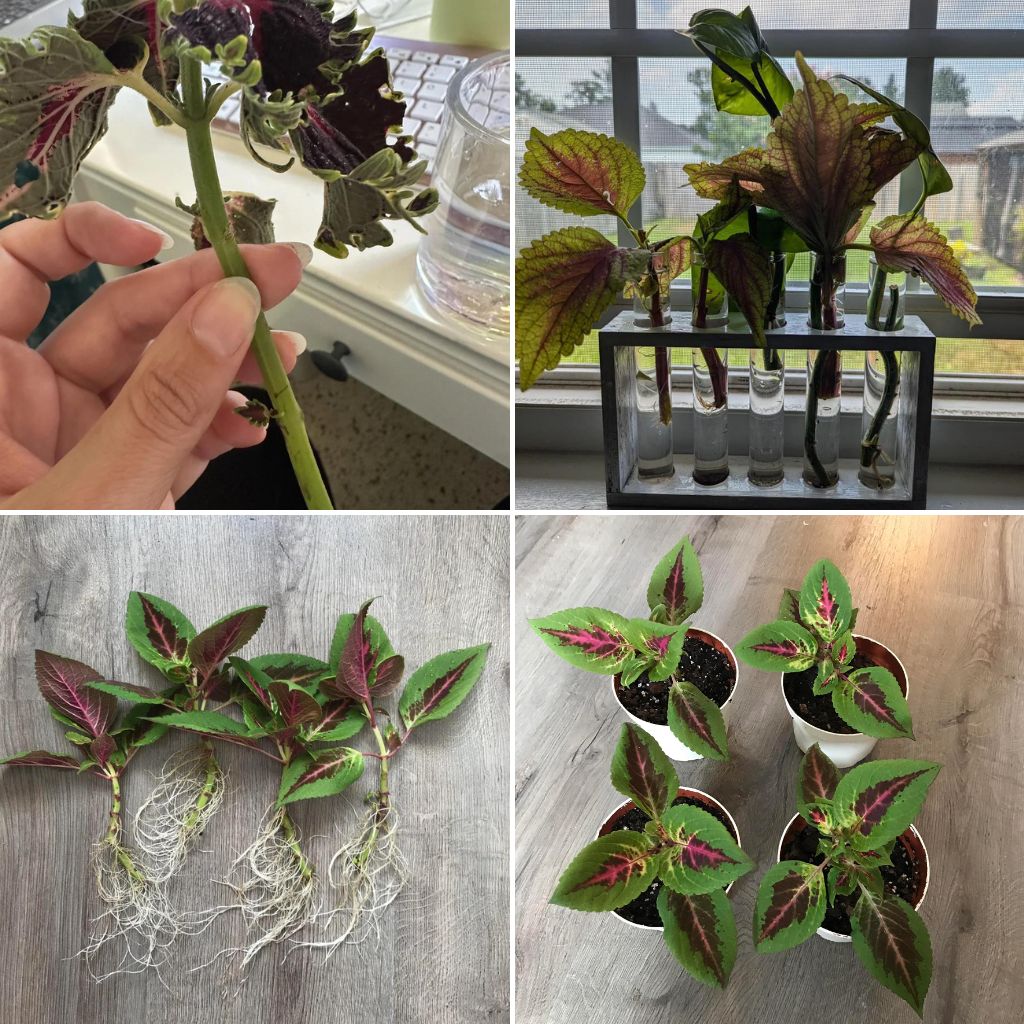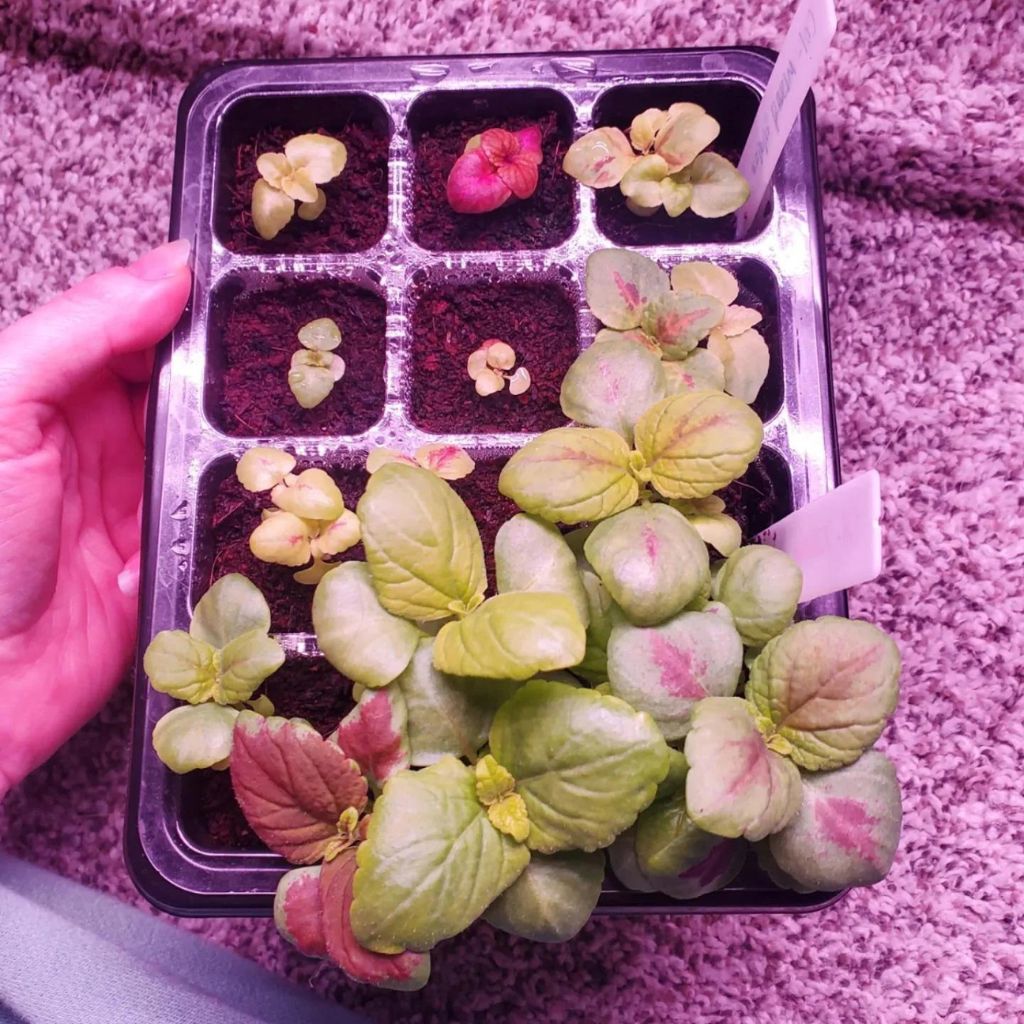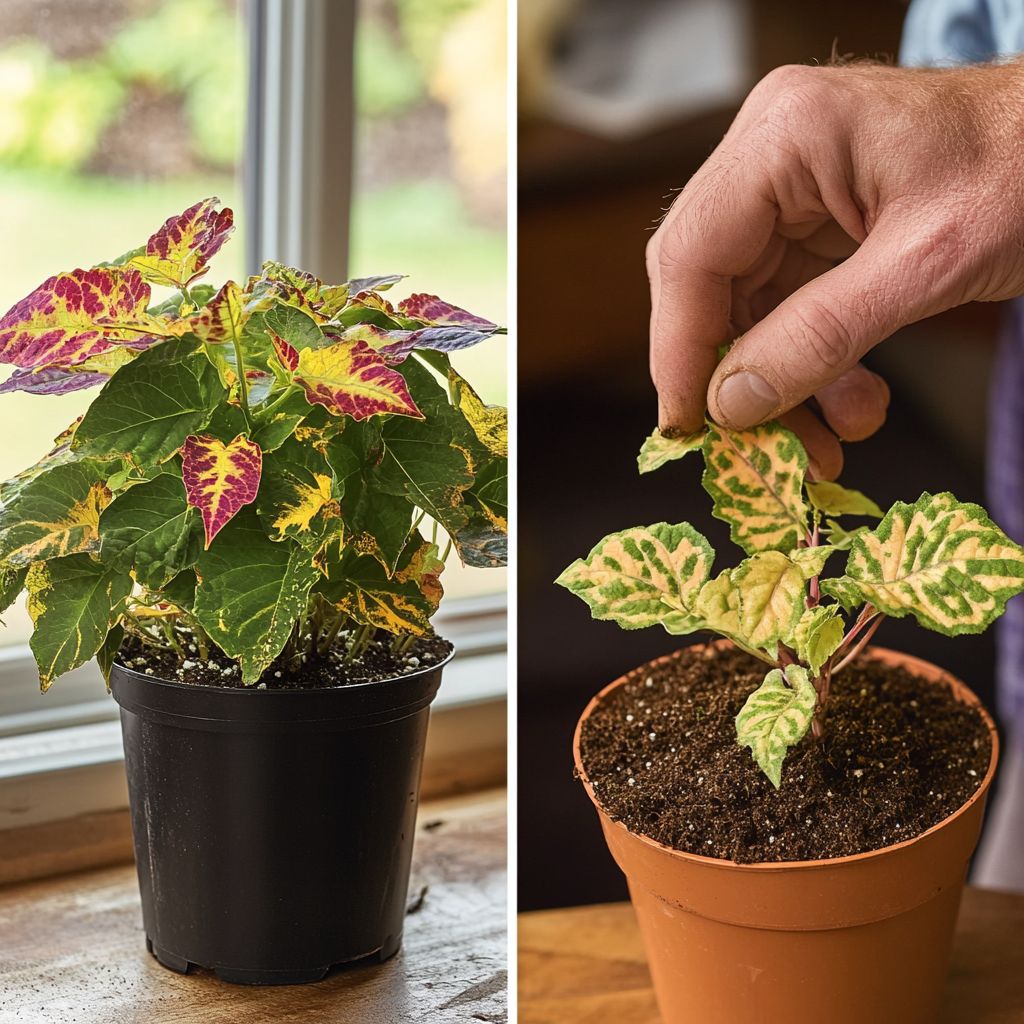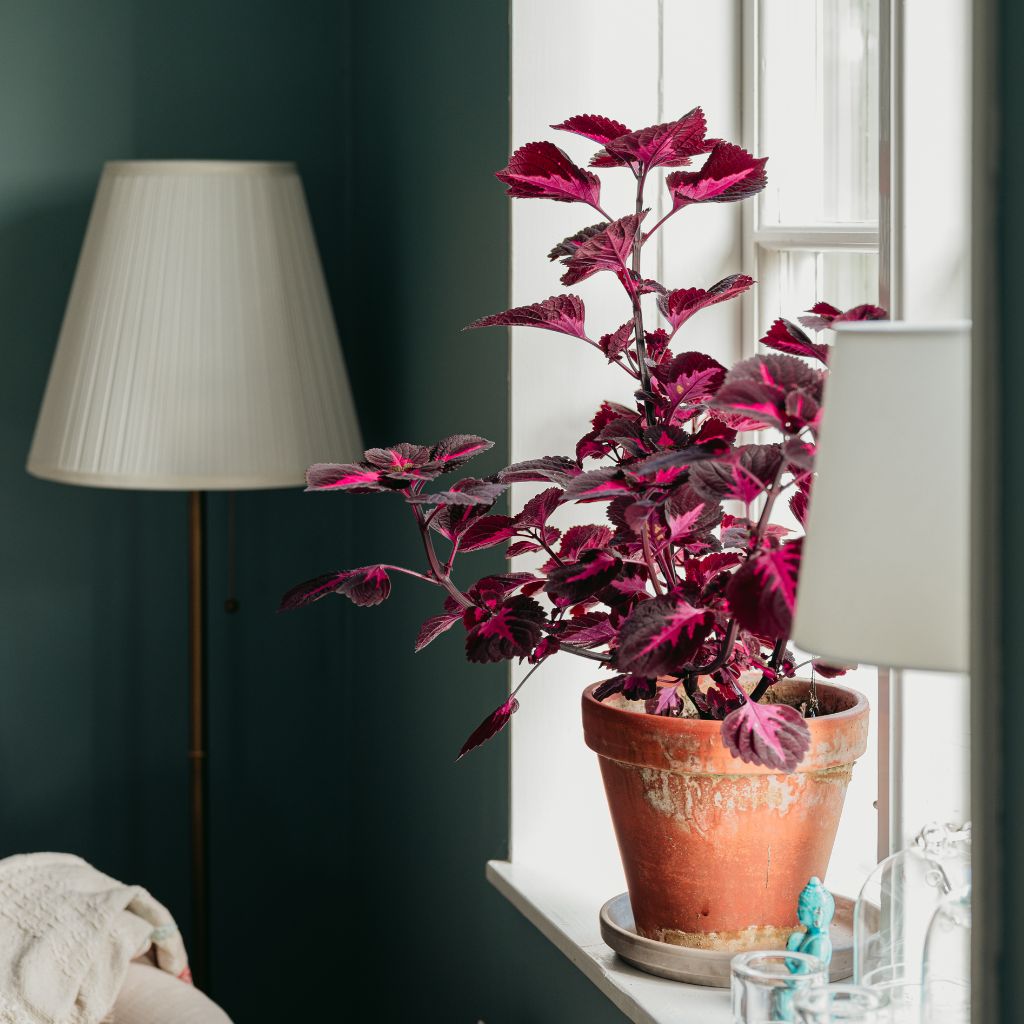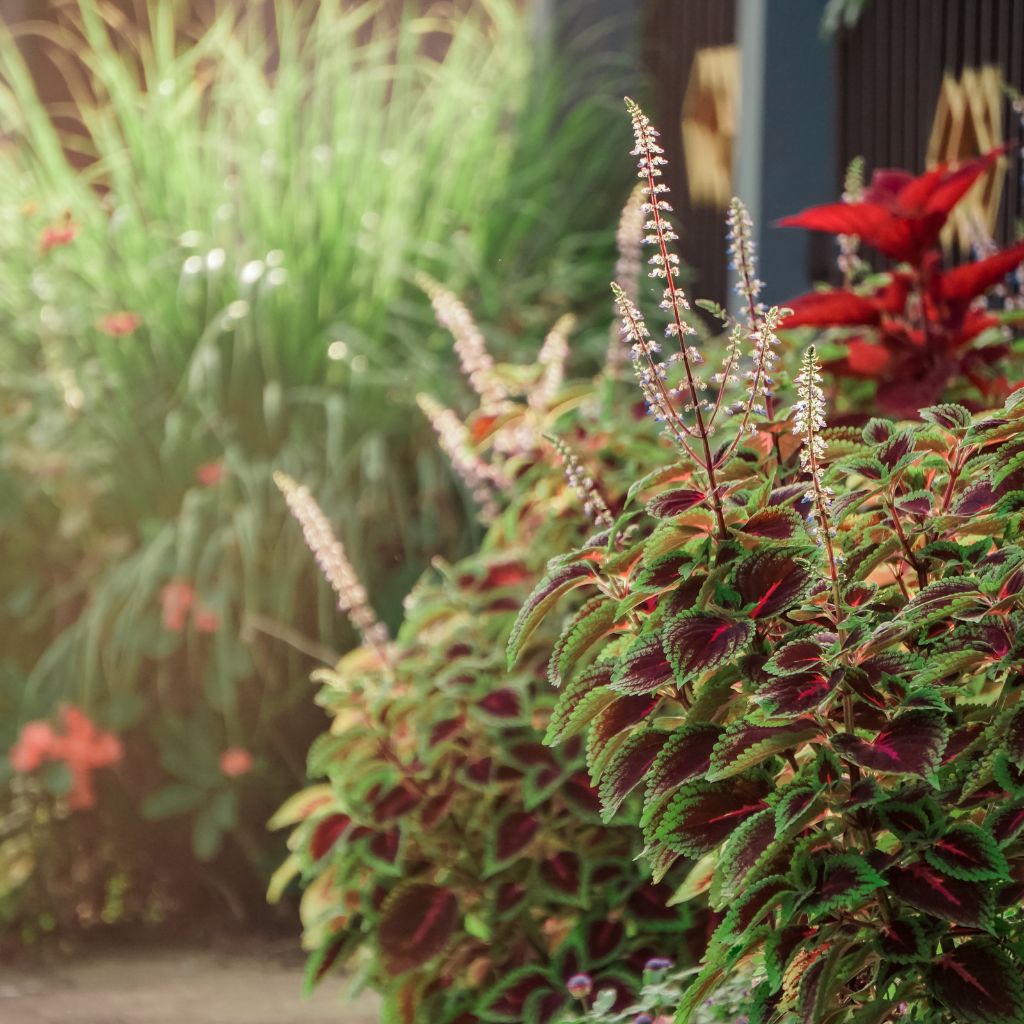Coleus plants, with their vibrant, multicolored foliage, are a gardener’s dream. Known for their versatility and low maintenance, coleus can transform any garden or indoor space into a vivid, eye-catching display.
This guide will walk you through everything you need to know to keep your coleus thriving, from choosing the right variety to mastering the art of watering, sunlight, and propagation.
Understanding Coleus: A Garden Essential
Coleus plants (Solenostemon scutellarioides), often referred to as painted nettle, belong to the mint family.
Native to Southeast Asia, these plants have become popular worldwide due to their striking foliage and adaptability. Coleus is available in a variety of colors, including reds, purples, greens, and yellows, often combined in intricate patterns that make them stand out in any setting.
Despite being grown primarily for their foliage, coleus can produce small, inconspicuous flowers, though many gardeners pinch these off to encourage more robust leaf growth.
Selecting the Right Variety for Your Garden
The first step in unlocking the potential of coleus in your garden is selecting the right variety. With hundreds of options available, each with unique color patterns and growth habits, there’s a coleus plant for every garden style and condition.
Wizard Series: These compact plants grow to about 12-14 inches and are perfect for container gardening or as border plants. The Wizard series offers a wide range of colors and patterns, making it easy to find the perfect match for your garden’s palette.
Kong Series: Known for their large, bold leaves, Kong coleus varieties can reach up to 2 feet in height. These plants are excellent for making a statement in shaded garden areas or large containers.
Premium Sun Series: If your garden receives a lot of direct sunlight, consider the Premium Sun series. These coleus plants are bred to withstand full sun without losing their vibrant colors, making them ideal for bright, sunny spots.
Black Dragon: For something unique, the Black Dragon variety offers deep burgundy leaves with ruffled edges, providing a dramatic contrast to lighter foliage in the garden.
Selecting the right coleus variety not only enhances the visual appeal of your garden but also ensures that your plants thrive in their specific environment, whether it’s full sun, partial shade, or deep shade.
Planting Coleus: Setting the Stage for Success
Coleus plants are relatively easy to grow, but proper planting is crucial to their success. Whether you’re planting in the ground or in containers, following these guidelines will help your coleus plants establish strong roots and vibrant foliage.
Soil Requirements
Coleus prefers rich, well-draining soil with a slightly acidic to neutral pH (between 6.0 and 7.0). Before planting, amend the soil with compost or organic matter to ensure it retains moisture while allowing excess water to drain away.
In containers, use a high-quality potting mix that includes perlite or vermiculite to improve aeration and drainage.
Planting Location
The planting location is critical to the health of your coleus. While some newer varieties can tolerate full sun, most coleus plants prefer partial to full shade.
If planting outdoors, choose a spot that receives morning sun and afternoon shade, which helps prevent the foliage from scorching.
If you’re growing coleus indoors, place them near a window with bright, indirect light. During the winter months, consider supplementing natural light with a grow light to prevent legginess.
Spacing and Planting Depth
When planting coleus in the garden, space the plants about 12-18 inches apart to allow for good air circulation, which helps prevent diseases.
If planting in containers, choose a pot large enough to accommodate the plant’s growth, usually about 12 inches in diameter for larger varieties.
Plant coleus at the same depth they were growing in their nursery pots, making sure the crown (where the stems meet the roots) is level with the soil surface. After planting, water thoroughly to settle the soil around the roots.
Watering and Fertilizing: Nourishing Your Coleus
Proper watering and fertilizing are key to unlocking the vibrant colors and lush growth of your coleus plants.
Watering Tips
Coleus plants thrive in consistently moist soil, but they do not tolerate soggy conditions. Overwatering can lead to root rot, while underwatering can cause the leaves to wilt and lose their color.
In-Ground Plants: Water when the top inch of soil feels dry. During hot, dry spells, you may need to water more frequently to keep the soil evenly moist. Mulching around the plants helps retain moisture and reduces the need for frequent watering.
Container Plants: Containers dry out more quickly than garden beds, especially in hot weather. Check the soil daily and water thoroughly when the top inch feels dry. Ensure that the container has drainage holes to prevent water from accumulating at the bottom.
Fertilizing Coleus
While coleus plants do not require heavy feeding, regular fertilization can help maintain their vibrant colors and encourage bushy growth.
In-Ground Plants: If planted in rich soil, coleus may not need additional fertilizer. However, you can apply a balanced, slow-release fertilizer at planting time or feed monthly with a water-soluble fertilizer diluted to half strength.
Container Plants: Feed container-grown coleus once a month during the growing season with a balanced, water-soluble fertilizer. Be careful not to over-fertilize, as too much nitrogen can cause the colors to fade.
Pruning and Pinching: Shaping Your Coleus
Pruning and pinching are essential techniques for maintaining the shape and fullness of your coleus plants. Regular pruning encourages the plant to produce more foliage, resulting in a fuller, bushier appearance.
Pinching: When your coleus plants reach about 6 inches in height, start pinching off the growing tips. Pinching encourages the plant to branch out and develop a more compact shape. Continue pinching throughout the growing season to maintain the desired size and shape.
Pruning: If your coleus becomes leggy or overgrown, prune it back by cutting the stems just above a leaf node (the point where a leaf attaches to the stem). Pruning not only improves the plant’s appearance but also promotes healthier growth by removing weak or damaged stems.
Propagating Coleus: Expanding Your Collection
Coleus plants are incredibly easy to propagate, making them an excellent choice for gardeners who want to expand their collection or share plants with friends. There are two primary methods for propagating coleus: stem cuttings and seeds.
Propagating from Stem Cuttings
Stem cuttings are the most common and reliable method of propagating coleus. Here’s how to do it:
Take a Cutting: Using sharp, sterile pruning shears, cut a 4-6 inch stem from a healthy coleus plant, just below a leaf node.
Prepare the Cutting: Remove the leaves from the lower half of the cutting, leaving only a few leaves at the top. If the leaves are large, you can cut them in half to reduce water loss.
Root the Cutting: Dip the cut end of the stem in rooting hormone (optional) and insert it into a pot filled with moist potting mix. Cover the cutting with a clear plastic bag or dome to create a humid environment, but make sure the plastic does not touch the cutting.
Care for the Cutting: Place the covered cutting in a bright, warm location with a temperature of about 70°F. Keep the soil consistently moist but not soggy. Roots should develop in 2-3 weeks.
Transplant the New Plant: Once the cutting has developed a strong root system, remove the plastic cover and transplant the new coleus into a larger pot or directly into the garden.
Growing Coleus from Seeds
Growing coleus from seeds is another option, especially if you want to experiment with different varieties or colors. Here’s how to grow coleus from seeds:
Sow the Seeds: About 8-10 weeks before the last expected frost, sprinkle coleus seeds on the surface of a tray filled with seed-starting mix. Press the seeds lightly into the soil but do not cover them, as coleus seeds need light to germinate.
Provide the Right Conditions: Cover the tray with a clear plastic lid or plastic wrap to retain moisture and place it in a warm location with temperatures between 70-75°F. Germination should occur in about 21 days.
Care for the Seedlings: Once the seedlings have two sets of true leaves, transplant them into small pots. Keep the soil moist and provide bright, indirect light.
Harden Off the Seedlings: Before planting the seedlings outdoors, gradually acclimate them to outdoor conditions by placing them outside for a few hours each day, increasing the time over a week.
Plant in the Garden: Once the seedlings are hardened off and the danger of frost has passed, transplant them into the garden or larger containers.
Common Pests and Problems: Protecting Your Coleus
While coleus plants are generally hardy, they can be susceptible to a few common pests and diseases. Early detection and proper care can prevent these issues from becoming serious problems.
Pests
Aphids: These tiny insects can cluster on the stems and undersides of leaves, sucking sap and causing the plant to weaken. Remove aphids by spraying the plant with water or treating it with insecticidal soap.
Spider Mites: Spider mites are tiny pests that can cause leaves to appear stippled or dusty. They thrive in dry conditions, so increasing humidity and regularly misting the plant can help prevent infestations. In severe cases, use neem oil or insecticidal soap.
Mealybugs: These pests appear as white, cottony masses on the plant. Remove mealybugs by wiping the plant with a cotton swab dipped in rubbing alcohol or using insecticidal soap.
Diseases
Root Rot: Caused by overwatering and poor drainage, root rot is a common issue with coleus. To prevent root rot, ensure that the soil is well-draining and only water the plant when the top inch of soil is dry.
Powdery Mildew: This fungal disease appears as a white, powdery coating on the leaves. To prevent powdery mildew, avoid overcrowding plants and water at the base of the plant rather than from above.
Downy Mildew: Similar to powdery mildew, downy mildew causes yellowing leaves and grayish mold on the undersides of leaves. Improve air circulation around the plants and remove any affected foliage to manage the disease.
Overwintering Coleus: Extending Their Life Cycle
In many regions, coleus is grown as an annual, but with proper care, you can overwinter your plants and enjoy them for multiple seasons.
There are two primary methods for overwintering coleus: bringing the entire plant indoors or taking cuttings to root and grow indoors during the winter months.
Bringing Coleus Indoors
If you want to keep your coleus plants intact, you can bring them indoors before the first frost:
Inspect for Pests: Check the plants for any signs of pests and treat them before bringing them inside.
Transplant if Necessary: If the coleus is growing in the ground, transplant it into a pot with well-draining soil.
Provide Indoor Care: Place the coleus in a bright spot with indirect light, away from drafts or heat sources. Water sparingly, just enough to keep the soil slightly moist.
Prune and Maintain: Prune the plant as needed to keep its shape, and continue to pinch off any flower buds that form.
Rooting Cuttings for Overwintering
Alternatively, you can take cuttings from your favorite coleus plants and root them indoors:
Take Cuttings: Follow the steps outlined in the propagation section to take and root cuttings from your coleus plants.
Grow Indoors: Place the rooted cuttings in pots with well-draining soil and keep them in a bright, warm location. Water sparingly and avoid overwatering.
Transplant in Spring: Once the danger of frost has passed in the spring, transplant the overwintered plants back into the garden or larger outdoor containers.
With their vibrant colors and striking patterns, coleus plants can truly unlock the potential of your garden’s boldest beauty.
By selecting the right variety, providing proper care, and mastering techniques like pruning and propagation, you can enjoy these stunning plants year after year.
Whether you’re growing coleus in the garden, in containers, or indoors, their easy-going nature and dramatic foliage make them a must-have for any plant lover.
So, roll up your sleeves, dig into the soil, and watch as your coleus transforms your garden into a living work of art.
